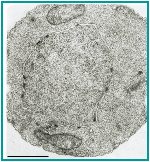Présentation
Emmanuelle Fabre, Pierre Therizols

Our questions are focused on functional organization of yeast nuclei (Saccharomyces cerevisiae and other hemiascomycetes). We are interested in how nuclear and chromosomal context play a role on genome stability and gene expression. By using live imaging techniques we have analysed the localization of one particular chromosome end and characterized its peripheral positioning. We could correlate this subnuclear localization to double strand repair efficiency in subtelomeres. We are characterizing how the nuclear context could affect genome stability in particular chromosomal compartments and defining localization of chromosomal ends by high throughput analyses. We aim at defining the conservation of chromosomal organization.
Our main objectives are:
- To understand the role of Nuclear Pore complexes on chromatin localization and DSB repair
- To understand the spatial organization of chromosome ends within the nucleus and its functional implications on genome stability

One major component of the nuclear architecture corresponds to the Nuclear Pore Complexes (NPCs).
Yeast NPCs are formed by 30 individual nucleoporins that can assemble in particular subcomplexes (i.e Nup84 complex).
We have found that preferential localization of chromosome ends at the nuclear periphery is lost in Nup84 complex mutants.
Chromatin silencing found at the end of most chromosome ends is also lost in Nup84 complex mutants.
Double strand break repair occurring in subtelomeres is severely impaired in these mutants

